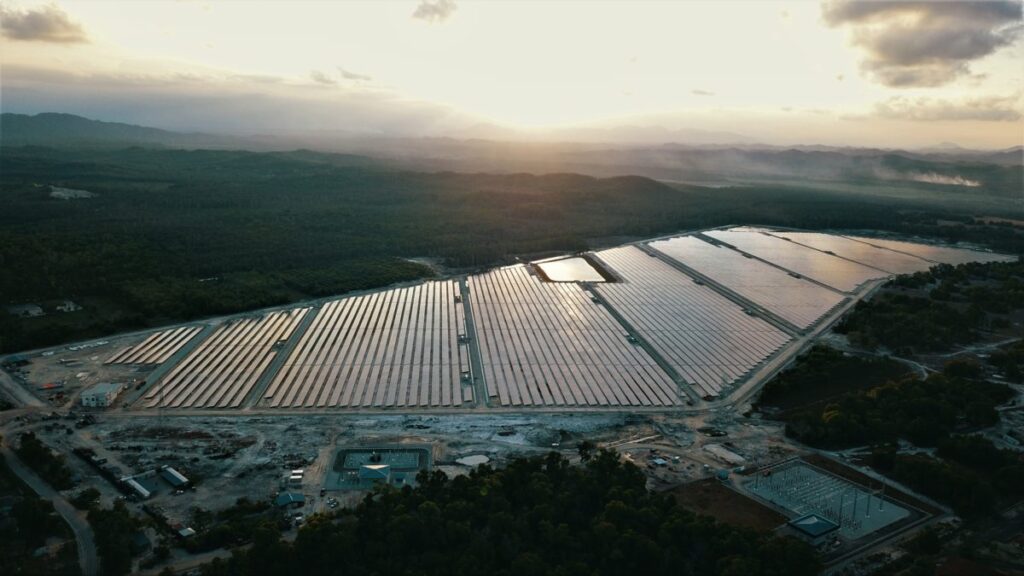What is Solar PPA?
Solar Power Purchase Agreement (PPA) is a financial contract that allows you to lease solar panels without the need for hefty upfront costs. Through a Power Purchase Agreement, solar providers can install a solar power generation system on your property, and you only pay for the electricity it produces. The electricity rates charged in a PPA contract are typically lower than the local utility rates, helping you achieve energy savings. Under the PPA contract, you don't own the system, but you have the right to use the solar system. The solar provider remains the owner and bears all installation and maintenance costs.
A Solar Power Purchase Agreement is similar to solar leasing, but the payment structure differs. With solar leasing, you pay a fixed monthly fee to use the solar system. In contrast, a Power Purchase Agreement charges you based on the monthly electricity generated, rather than a fixed payment.
Due to increased sunlight hours, solar panels are more productive in the summer and less productive in the winter. Therefore, PPA payments tend to be higher in the summer and lower in the winter. On the other hand, solar leasing charges a fixed payment throughout the year, unaffected by sunlight variations. When you sign a PPA, the solar provider bears all upfront costs, including equipment procurement, labor costs, and permit costs. The provider is also responsible for maintaining the solar photovoltaic (PV) system, meaning they cover maintenance costs. In exchange, you agree to purchase all the electricity generated during the contract period. To make the deal attractive to you, the kilowatt-hour (kWh) price in the agreement is lower than the local utility rate.
When you own solar panels directly, you retain all the savings and incentives generated by the system. In contrast, a Solar Power Purchase Agreement distributes economic benefits between the system provider and the homeowner. Key benefits for homeowners or PPA users include purchasing clean electricity at a price lower than the local utility rate, reducing the carbon footprint of your home, and outsourcing the maintenance of the solar system to an experienced company, ensuring savings on electricity bills for up to 25 years. On the other hand, benefits for solar system providers include customers purchasing energy through long-term contracts, eligibility for solar tax credits and rebates, and earning income from solar projects distributed across many homes and businesses.
The Power Purchase Agreement is a specific type of PPA that effectively addresses transaction risks for market participants in long-term operations. PPAs can drive the renewable energy industry towards high-quality, large-scale, and steady development. As a crucial tool for managing load and price risks for both parties involved, the introduction of PPAs can further empower different market participants to leverage their respective strengths, mitigate operational risks, and provide flexible and innovative trading models. For electricity users, PPAs offer price visibility, help lock in electricity costs, stabilize power supply, aid in low-carbon transition, and diversify electricity resource options, sharing market risks more broadly. For power generation companies, PPAs promote the consumption of renewable energy, provide stable income expectations, expand project financing channels for those interested in investing in renewable energy projects, and offer reliable contract options closer to the user side. For retail companies, PPAs present new business models and stable revenue sources.
Power Purchase Agreements, with contract terms as per mutual agreement, can extend up to ten to twenty years. Through PPAs, electricity users purchase the electricity generated by renewable energy projects and the corresponding environmental benefits. Depending on the risk preferences of the buying and selling parties, PPAs can flexibly match the needs of both parties, designing contract terms and sharing and matching market risks.
Due to its openness and flexibility, PPAs have become a key tool in helping both electricity supply and demand sides manage load and price risks. On the generation side, renewable energy needs to start from the long term, continually updating contract terms based on the latest load forecasts, and finally settling based on the actual output and the declared quantity before clearing. However, PPAs can effectively divide load management risks based on contract terms and transmit corresponding risks to the demand side based on risk preferences. For the demand side, as users attempt to use a higher proportion of renewable energy, they need to address load management risks, namely the difference between the renewable energy generation curve and the user's electricity consumption curve. Electricity market contract relationships require a constant supply-demand relationship, but user electricity behavior cannot fully correspond to the new energy generation curve. During periods of low or insufficient renewable energy output, users need to purchase additional electricity from the market. Particularly due to the volatility and uncertainty of renewable energy output, short-term differences expose some of the user's electricity costs to the highly volatile spot market.
The introduction and promotion of PPAs better meet the green power needs of electricity users, stabilize the revenue expectations of renewable energy projects, and jointly promote the development of the renewable energy industry from both the supply and demand sides. The costs of regulating the power system, standby costs, and capacity costs will significantly increase with the further increase in the proportion of renewable energy. The introduction of PPAs introduces retail companies as balancing responsibility entities, enhancing the balance capability of the power system. At the same time, retail companies gather a large amount of green power demand from different enterprises, providing deviation management services through various means such as self-built, agency, or leased flexible regulation resources, further enhancing the flexibility of the power system. Meanwhile, PPAs can promote the development of the renewable energy industry, significantly increasing the demand for regulatory resources in the power system, stimulating investment in flexible regulation resources, promoting the application of new business models such as virtual power plants and shared energy storage, and driving the construction of a new power system.
